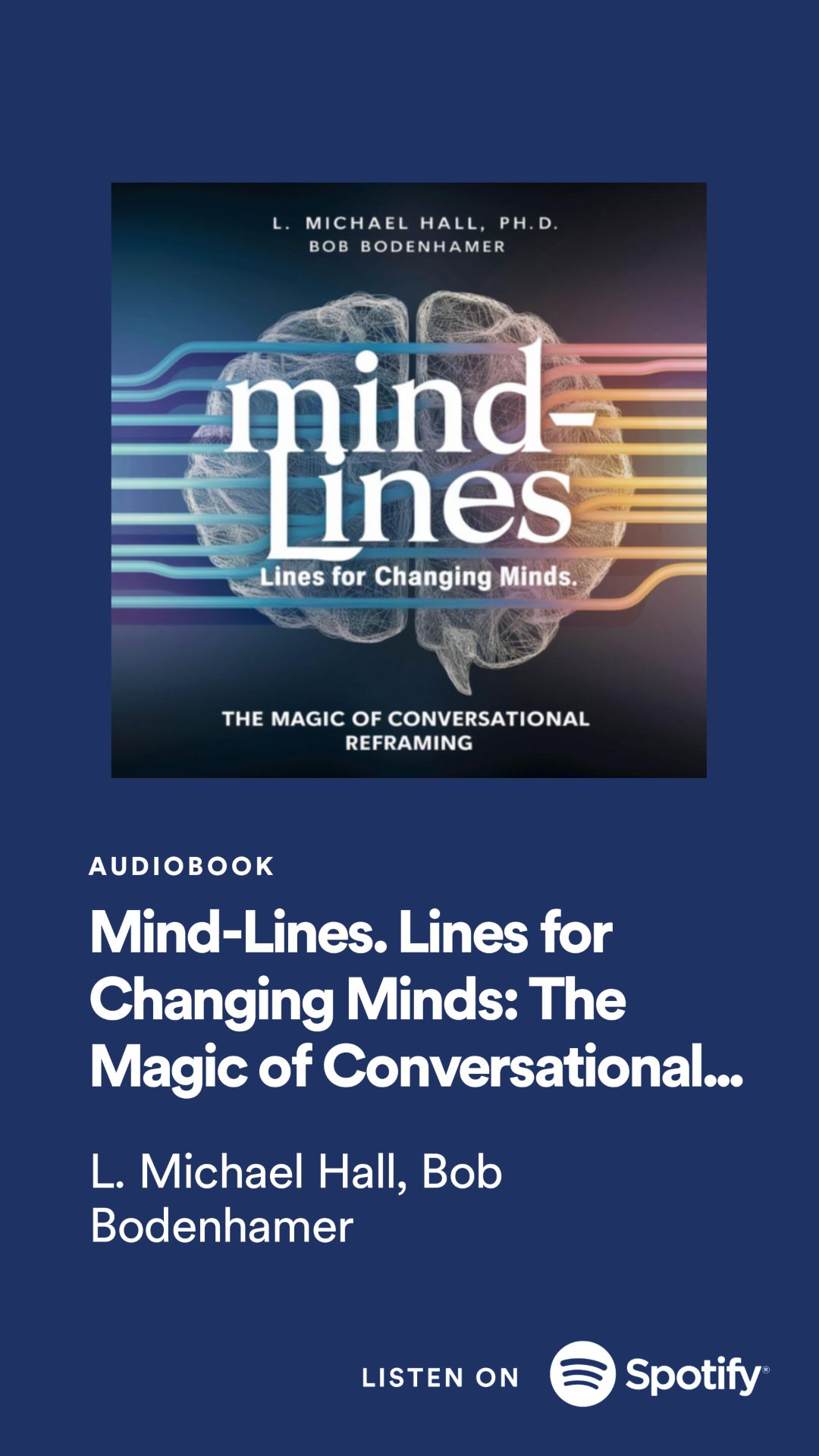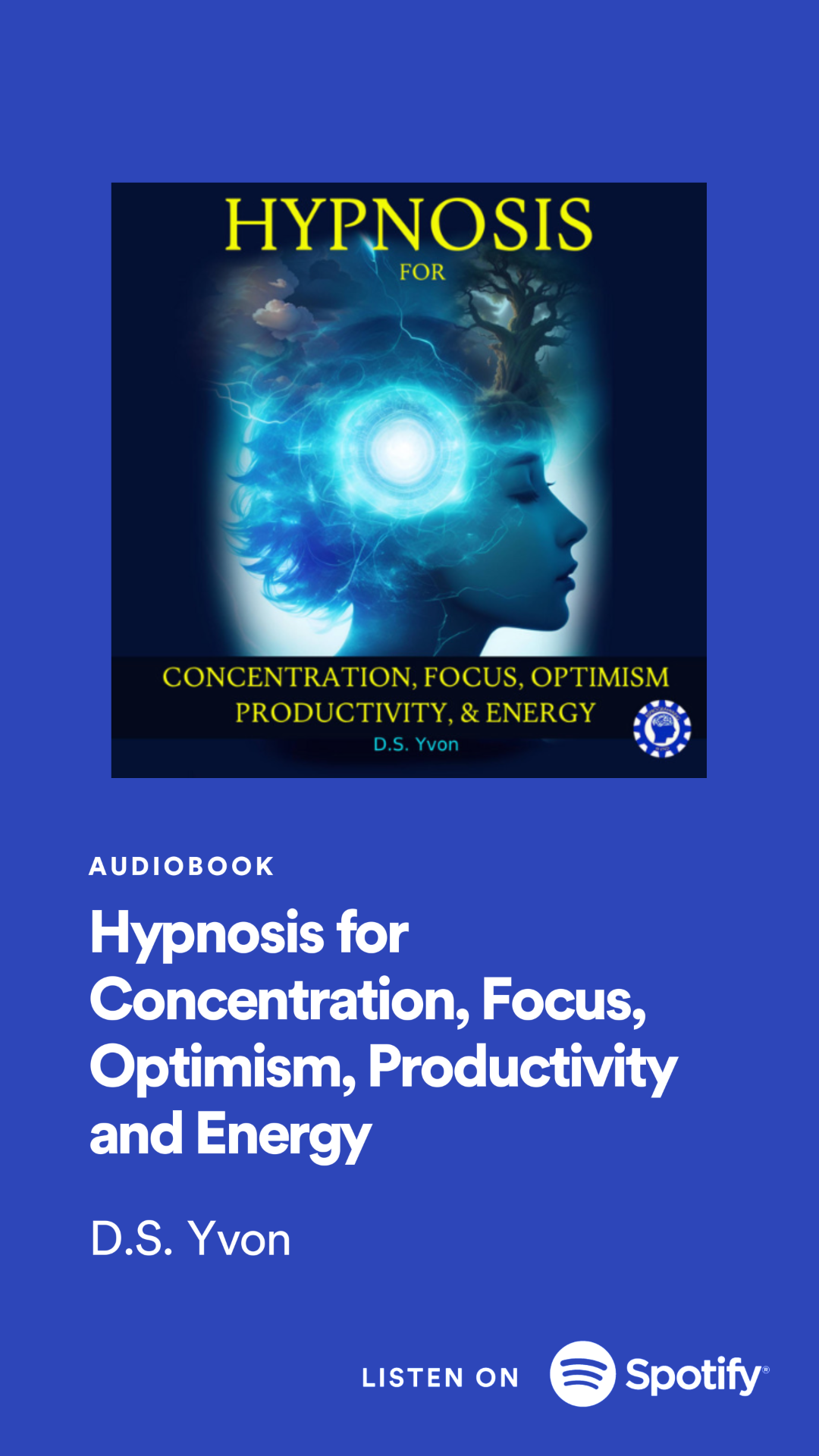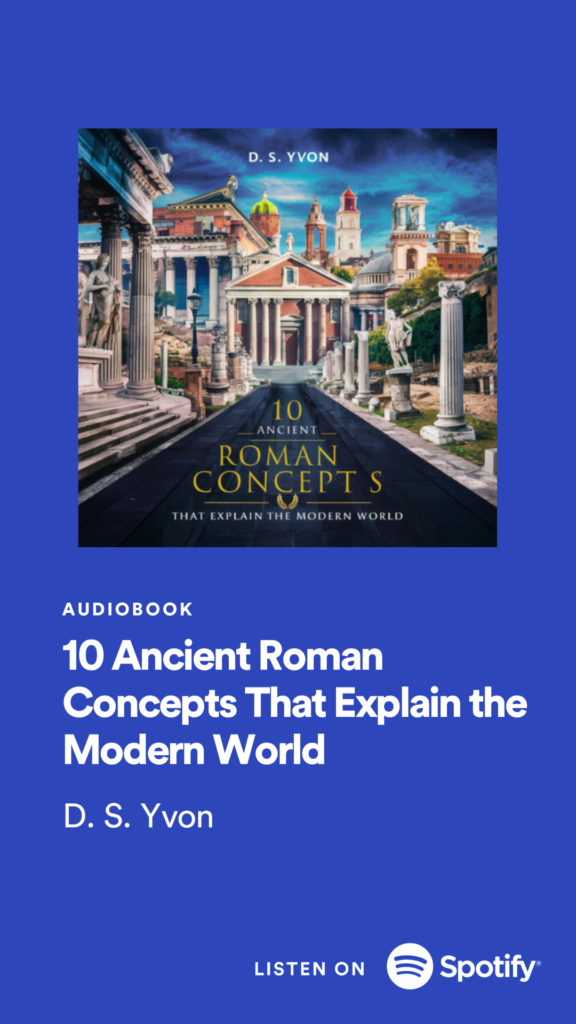The phobia cure to erase fears is a strategy that was first published in 1985 by Richard Bandler in his book 'Using Your Brain for a Change'.
Back then it was also mentioned in Time magazine, but there wasn't any scientific proof for how a mind strategy could erase a phobia. And at the time, the neuroscience literature about memory indicated that long term memories are permanent, regardless of the results Bandler was getting. The problem was that the neuroscience regarding memory was wrong and stayed wrong for over a hundred years until multiple papers came out showing how memories can be updated using an innate process in the brain called memory reconsolidation.
And this is an interesting example of what getting results is about. A portion of it is finding people that are getting the results you want. Then find out how they do it, and then copy them.
So Richard Bandler was asking others how they got over phobias. In all the interviews a pattern in their steps began to emerge. And so it began.
The strategy is so effective and has been recommended by several doctors, included Stephen Joseph, the author of 'What Doesn't Kill Us-The New Science of Post Traumatic Growth'
This is a famous strategy and it is one that appears to use the memory reconsolidation mechanism.
The x (ex, snake, elevators, phobia, target learning) is activated and then a strong mismatch experience occurs while the problem state is also experienced neutrally. This done during the 5 hour window to specifically wipe out the emotional content of that memory.
Here is the Visual Kinesthetic Dissociation Protocol in it's entirety by Richard M. Gray Ph.D.
You can hear him speak at the 2011 meeting in Cardiff or read his publication about
the VK/D below.
Below is a more detailed description of the strategy, now known as the VK/D Protocol.
NLP and PTSD: The Visual-Kinesthetic Dissociation Protocol.
Reprinted from Suppose, the Official CANLP/ACPNL Bilingual Newsletter. Spring 2010, pp. 25-42.
Richard M. Gray, PhD, Assistant Professor
School of Criminal Justice and Legal Studies
Abstract. The intrusive symptoms of PTSD Impact thousands of state and local police officers, armed service men and women and civilians of every description. Current treatments rooted in extinction protocols require extensive commitments of time and money and often have limited effectiveness. This study reviews two important mechanisms that explain when treatment does and doesn’t work: extinction and reconsolidation. It then reviews the research regarding and suggests an explanatory mechanism for the Visual-Kinesthetic Dissociation Protocol, also known as the Rewind Technique. The technique is notable for its lack of discomfort to the patient, the possibility of being executed as a content free intervention, its speed of operation and its long term, if largely anecdotal, efficacy. Specific diagnostics for extinction and reconsolidative mechanisms and suggestions for future research are provided.
Keywords: PTSD, PTSD treatment, PTSD models, Visual-Kinesthetic Dissociation, Rewind technique, extinction, reconsolidation
PTSD is diagnosed in terms of four criteria. The first of the criteria is the traumatizing event. In order to qualify as a traumatizing event both of the following must appear: 1. the person experienced, witnessed, or was otherwise confronted with one or more events that actually involved or threatened death, serious injury or some other threat to the physical integrity of that individual or others. 2. The individual’s response involved intense feelings of horror, fear or helplessness. The other diagnostic criteria are divided into three symptom clusters, the reexperienceing cluster, the avoidance / numbing cluster and the arousal cluster (American Psychiatric Association(APA), 1994).
According to Foa & Meadows (1997) the intrusion or reexperiencing symptoms include the hallmark signs of PTSD including nightmares, intrusive thoughts and flashbacks. The avoidance group includes efforts to avoid memories of the traumaticexperience and symptoms of emotional numbing. The third symptom cluster includes symptoms of hyperarousal including sleeplessness, irritability and hypervigilance (APA, 1994; Bodkin, Alexander, Detke, Pope, & Hudson, 2007; Davidson, & Foa, 1991; Friedhelm & Sack, 2002; Keane, Weathers & Foa, 2000, McHugh, & Treisman,2007; Spitzer, Wakefield, & First, 2007).
Diagnosis is made when symptoms (at least one from the reexperienceing cluster, three from the avoidance cluster and two from the hyperarousal cluster) cause clinically significant distress or discomfort and have persisted for a minimum of one month (APA, 1994).
Extinction and Re-consolidation Effects in the Treatment of PTSD
If we understand PTSD as being, at heart, a group of behaviors associated with a classically conditioned fear response, then neural models of learning and forgetting become crucial components of our understanding. Two specific mechanisms appear to be most important as theoretical models for the treatment of PTSD. These are extinction and re-consolidation.
Extinction. When the memory linkage between a Conditioned Stimulus (CS) and a fear evoking event (UCS) is extinguished, a new memory is created that communicates the absence of the feared object and blocks access to the original memory that signaled the onset of the feared event. These new memories tend to be context sensitive and somewhat more fragile than the original memories. Extinction, therefore, in the classical learning paradigm, refers to the learning of new information now provided by the conditioned stimulus (CS) in the learning context. It does not refer to the elimination, forgetting or modification of the memory. Extinction models in the treatment of PTSD are characterized by four specific effects through which the behavior may be re-established or through which relapse occurs. As they appear in the post-treatment or relapse behavior of PTSD patients, they may be viewed as diagnostic of the fact that extinction is the specific mechanism underlying the treatment. These effects are spontaneous recovery, contextual renewal, reinstatement and rapid reacquisition (Bouton, 2004a; Bouton & Moody, 2004; Dillon & Pizzagalli, 2007 ; Hartley & Phelps, 2009; Massad & Hulsey, 2006; Quirk & Mueller, 2007; Rescorla, 1988; Vervliet, 2008).
Spontaneous recovery refers to the re-occurrence of the extinguished or unreinforced fear response after the passage of time. It was first observed by Pavlov and is one of the first evidences that extinction does not remove the memory. As noted, extinction involves the creation of a new contextual association to the effect that in this context, the CS does not predict the feared stimulus (the UCS) and, therefore, the fearful response is irrelevant. That new memory of the new contingencies, if unreinforced, is subject to a time-based decay. It is forgotten over time and the fear re-emerges(Bouton, 2004a; Bouton & Moody, 2004; Dillon & Pizzagalli, 2007 ; Massad & Hulsey, 2006; Rescorla, 1988; Vervliet, 2008).
Contextual renewal refers to the re-emergence of the conditioned response in a new circumstance where the extinction memory was not created. If the patient is subjected to unreinforced (extinction) trials in one context, so that the CS fails to evoke the feared response in that context, a subsequent test of that same CS in another context may show little or no reduction in expression. Even though the original fear response may generalize to multiple contexts, extinction phenomena are much more context dependent. Contextual renewal is contextually bound; the response is only renewed in the contexts where the UCS has again appeared (Bouton, 2004a; Bouton & Moody, 2004; Dillon & Pizzagalli, 2007 ; Massad & Hulsey, 2006; Rescorla, 1988; Vervliet, 2008).
Reinstatement occurs when the fearful stimulus, the UCS, is presented without the CS. In that context where the original UCS is presented, despite the fact that the fearful response had been fully extinguished, the CS will be restored. It will not, however reappear in other contexts where the UCS has not been presented (Bouton, 2004a; Bouton & Moody, 2004; Dillon & Pizzagalli, 2007 ; Massad & Hulsey, 2006; Rescorla, 1988; Vervliet, 2008).
Rapid reacquisition, as the name suggests, describes the reacquisition of the fear memory after it has been successfully extinguished. In this case there is a net savings in the number of trials needed to re-acquire the memory. If, for example, the original fear association took ten trials to install, during post-extinction training, it may take only three (Bouton, 2004a; Bouton & Moody, 2004; Dillon & Pizzagalli, 2007 ; Massad & Hulsey, 2006; Rescorla, 1988; Vervliet, 2008).
Extinction has traditionally been held to be the tool of choice for the treatment of PTSD. Foa and her colleagues have indicated that in its various forms, from desensitization through imaginal and in vivo exposure, it is the most well researched and most highly regarded of treatments and, in combination with cognitive behavioral interventions or supplements, represents the scientific treatment of choice (Edna B. Foa, Keane, & Friedman, 2000; Foa & Meadows, 1997a, 1997b; Rothbaum, Davis, King, Ferris, & Lederhendler, 2003; Wessa & Flor, 2007).
Insofar as extinction-based exposure treatment is the most common form of intervention we may expect that relapse data from extinction based studies should provide the following predictable kinds of relapse behavior. Because PTSD and trauma related memories are resistant to extinction, we would expect extinction effects to be variable at best. Because the extinction memory is subject to decay over time, we may expect extinction-based treatments to be characterized by a certain level of temporal instability. In light of the crucial role played by the ventro-medial prefrontal cortex (VmPFC) in the inhibition of Amygdalar function in extinction training, the decreased function of those circuits under conditions of extreme stress mitigates against the efficacy of exposure models. For these reasons, without further treatment, extinction measures alone may be only partially effective(Diamond et al., 2007; Gharakhani et al., 2006; Liberzon et al., 2007; Wessa & Flor, 2007).
An examination of the exhaustive work of Foa and her colleagues (Foa & Meadows, 1997; Foa et al., 2000) along with data from other researchers (Massad & Hulsey, 2006; McNally, 2007; Wessa & Flor, 2007) reflects that extinction based results are inconsistent in their long-term effects. A review by Shalev, Bonne and Eth (1996) finds mixed results with cognitive behavioral interventions based largely on extinction practices. Rothbaum, Meadows, Resick & Foy (2000) reviewed 19 studies of extinction-based treatments for PTSD at various levels of sophistication. The studies included exposure treatments, systematic desensitization and combinations of treatments including exposure elements. The results were uneven and ranged from little or no effect on PTSD symptoms to 85% reductions in symptoms. Practice guidelines for the treatment of PTSD, provided by the American Psychiatric Association (Ursano et al., 2004) finds similar uneven results.
Pitman et al. (Pitman, et al., 1996) review several cases of Vietnam Veterans who were subjected to multiple sessions of imaginal flooding. An average improvement between pre and post measures of intrusion and avoidance of 26% reduced to 14% in post treatment follow-up. In their final analysis, the authors determined that the extent of emotional processing was unrelated to the efficacy of treatment measured in terms of the decrease of intrusive symptoms. Despite the extinction-based treatment, for most clients, the symptoms remained.
Reconsolidation. During the early 21st century, reconsolidation came to the forefront of memory research when it was illustrated that propranolol, a noradrenalin inhibitor, when injected directly into the amygdalar tissue of rats, was capable of modifying or erasing the trace of traumatic memories. Other studies found that the introduction of anisomysin into the basolateral amygdala had similar results. Further chemical studies revealed that the crucial element, further upstream, was the inhibition of NMDA production and release, preventing the continued consolidation or reconsolidation of the activated memory (Cao et al., 2008; Jacek, Ecedil, & LeDoux, 2006; Riccio, Millin, & Bogart, 2006; Tronson & Taylor, 2007).
This research revived a long standing debate into the nature of long term memory. Whereas classical extinction, as noted above, held that new memories blocked access to permanent associations between conditioned stimuli and responses in long term memory stores, reconsolidation theory held that the process of long term memory consolidation took place over time and that each access to the memory rendered the association labile, subject to change. (Akirav & Maroun, 2006; Alberini, 2005; Cao et al., 2008; Debiec, Doyre, Nader, & LeDoux, 2006; Duvarci & Nader, 2004; Forcato, 2009; Gharakhani et al., 2006; Lee, Milton, & Everitt, 2006; Milekic & Alberini, 2002; Nader, Schafe, & LeDoux, 2000; Riccio et al., 2006; Tronel, Milekic, & Alberini, 2005).
Insofar as the reactivated memory associations were always reinforced with the same or similar experiences, in the same or a similar contexts (including subjective contexts) over time, the memory grew less and less susceptible to change. If, however, when the memory was reactivated, the organism encountered new information, the actual content of the memory might be modified or even erased. Lee has characterized reconsolidation as a mechanism for maintaining the relevance of learned associations (Alberini, 2005; Hupbach, Hardt, Gomez, & Nadel, 2008; Labar, 2007; Lee, 2009; Loftus & Yuille, 1984; Tronel et al., 2005).
Just as extinction procedures have distinctive characteristics, so reconsolidation mechanisms also have their signature aspects. These include: diminution of or complete elimination of the target memory, resistance to spontaneous recovery, lack of net gain in reacquisition learning, and lack of contextual renewal.
Crucially, in order for reconsolidation to impact the structure of the original memory, the memory must be activated by a brief exposure to a first-order cue. The effects are time dependent and only occur within a specific window of opportunity after the memory is activated. These changes typically do not appear in short term memory but in measures of long term memory(Akirav & Maroun, 2006; Alberini, 2005; Debiec, LeDoux, & Nader, 2002 ; Duvarci & Nader, 2004; Forcato et al., 2007; Kaang, Lee, & Kim, 2009; Kindt, Soeter, & Vervliet, 2009; Nader et al., 2000; Riccio et al., 2006).
Memories treated under such a reconsolidation regimen tend to be permanently removed or permanently modified. If they are subject to spontaneous recovery, they reappear in the modified form (Loftus & Yuille, 1984). If they have been erased or replaced they cannot be revived without retraining de novo(Cao et al., 2008; Duvarci & Nader, 2004; Forcato, 2009; Forcato et al., 2007; Kindt et al., 2009; Lee et al., 2006).
Reacquisition in extinction typically shows enhanced efficiency of relearning. That is, it takes fewer trials to reestablish the subject behavior. In memories that have been modified using reconsolidation based procedures, there is no net gain in relearning; when relearned, they are learned as if they were totally new behaviors (Cao et al., 2008; Duvarci & Nader, 2004; Kindt et al., 2009).
Contextual renewal does not occur. This means that even when the unconditioned fear stimulus is presented in a novel context, the learned fear response does not reappear. This is not enhanced extinction (Duvarci & Nader, 2004).
Procedurally, reconsolidation and extinction are initiated using distinct protocols. The crucial difference appears to be that a single, short presentation of the conditioned stimulus reactivates and labilizes the memory, while longer presentations and multiple presentations activate the extinction memory. Where experiential effects are used as amnestic agents—essentially modifying, overwriting or eliminating the target memory—their efficacy is in part determined by their temporal proximity to the eliciting stimulus. That is, the sooner they are presented after activation of the target memory, the better (Lee, 2009; Pedreira, Perez-Cuesta, & Maldonado, 2004).
In human studies of the phenomenon, it has been found that reconsolidation can be used to eliminate or modify the emotional component of a traumatic memory while leaving the declarative elements intact. It has also been shown that reconsolidation processes have a direct effect on first order memories but not on associative chains based on that original experience (Kindt et al., 2009).
Reconsolidation and the Visual Kinesthetic Dissociation Protocol.
Reconsolidation effects have been suggested as a powerful method for the treatment of PTSD. While historically, the mechanism has been associated with the non-pharmacological creation of retroactive amnesia, there has been little work that explicitly links this material to treatments for PTSD. Despite other explanations, it is reasonable to believe that the Visual Kinesthetic Dissociation Model, originally described by Richard Bandler (1985) makes specific use of reconsolidation mechanisms and deserves serious consideration by mental health professionals (Forcato et al., 2007; Labar, 2007; Riccio, Millin, & Bogart, 2006).
The Visual Kinesthetic Dissociation technique (V/KD), is supported by anecdotal reports by practitioners that cover nearly a quarter century. Among the anecdotal reports are those provided by Richard Bandler, Steve and Connierae Andreas, Robert Dilts, and William McDowell who severally relate that each of them has treated thousands of persons suffering from PTSD and phobic conditions with immediate, lasting results from this short term intervention. In many cases they report complete symptom alleviation after long term follow-up (Andreas & Andreas, 1989; Bandler, 1985; Dilts & Delozier, 2000; McDowell & McDowell, nd).
Consistent with the pattern of memory reconsolidation, the intervention includes minimal evocation of the problem response along with multiple overlays of new associations that, in essence, rewrite the memory. As in previously reported reconsolidation studies, the traumatic event either becomes inaccessible, significantly modified, or subject to non-traumatic declarative access (Alberini, 2005; Hupbach, Hardt, Gomez, & Nadel, 2008; Labar, 2007; Tronel, Milekic, & Alberini, 2005).
The procedure first appeared in Bandler’s Use Your Brain for a Change (1985). An expanded version of the procedure appeared in the Andreas’ Heart of the Mind (Andreas & Andreas, 1989). Dilts and Delozier (2000) provide a slightly different version of the protocol in their Encyclopedia of Systematic NLP. The technique has also been popularized in the UK as the rewind technique (Guy & Guy, 2003; Muss, 1991, 2002).
Psychological investigations of the technique are limited to three scientific studies, two reviews and several mentions in the literature. Each of the referenced studies recommends the technique as a valuable tool for treating PTSD and makes suggestions for further research (Carbonell & Figley, 1999; Dietrich et al., 2000; Figley, 2002; Hossack & Bentall, 1996; Koziey & McLeod, 1987; Muss, 1991, 2002). There is also one non-peer reviewed study that is reported on-line (Guy & Guy, 2003).
Koziey and McCleod, writing in 1987, reported their experiences in treating two rape victims with a mixed technique employing Bandler’s three-place dissociation in combination with hypnotic trance. An initial pretreatment session was used to review the technique and to complete an assessment package. In a second session, the authors used hypnotic trance to provide a resource state to ensure that the traumatic memories would not become overwhelming. One week later, in a second treatment session, the patients completed another set of evaluations, were hypnotized and then the hypnotized subjects were led through the three part dissociation. Consistent with the standard procedure, they were led through an imagined, dissociated review of the trauma in which they watched themselves, watching themselves, watching a movie of the trauma. The movie began with a still image of the client in a safe time before the traumatic event, projected on an imaginary screen. The experience ended with a safe place after the trauma with each of the clients merging their own dissociated identities and sharing the learnings from their experience. Unspecified measures of 28 dependent variables showed significant changes in pre-post comparisons with near total abatement of symptoms in one of the subjects.
Muss (Muss, 1991, 2002) reports having used the technique first with 19 police officers who met DSMIII diagnostic criteria for PTSD, and later with all manner of traumatized persons(Muss, 2002). In nearly all of the 19 police cases, he reports remission of symptoms. He provides no control conditions and few details of the study, however, in long term follow ups (3 month to three years) in 15 of the 19 cases, he reports a complete absence of intrusive imagery. Crucially, as noted by Andreas, Muss indicates that the technique is appropriate to clients whose primary symptoms are experienced as intense, suddenly arising experiences of the trauma symptoms usually experienced as flashbacks or panic reactions (Andreas, 2008, Personal communication).
A third study, by Hossack and Bental (Hossack & Bentall, 1996) included five subjects who were treated with a combination of guided visualizations, Jacobsen’s deep muscle relaxation and two sessions of the VK/D protocol. Although one of the five subjects was unable to complete the visualizations associated with the VK/D procedure, the four completers all reported significant reduction of intrusive images and were able to return to normal life activities.
Guy and Guy report that the technique (renamed by Muss (1991, 2002) as the Rewind technique) was applied to thirty people between 2000 and 2002. All were diagnosed with PTSD or partial PTSD. Participants were interviewed ten days post treatment. Forty percent adjudged their improvement as extremely successful, fifty-three percent as successful and seven percent as acceptable. None rated the treatment either as poor or as a failure (Guy & Guy, 2003).
The following description of the basic protocol depends upon extensive personal communications with Andeas, Dilts and Halbom and continued reference to their descriptions of the protocol in several written sources (Andreas & Andreas, 1989; Bandler, 1985; Dilts & Delozier, 2000). A detailed protocol is available from the author.
The Visual Kinesthetic Dissociation. It is important to understand that Andreas emphasizes that this technique is only effective when the client’s difficulties are essentially a phobic, instantaneous conditioned response to stimuli related to a traumatic event. In general, the symptoms will focus on flashbacks and other immediate panic responses to stimuli associated with the traumatic event. In terms of classical PTSD symptomatology we would associate this with simple PTSD. While it may be effective in complex cases, its efficacy will be limited to the intrusive and avoidant symptoms.
The technique begins by establishing rapport and framing the intervention as a short visualization process. The process is ordinarily comfortable, but sometimes has a very short period of moderate discomfort. This stage may include practice behaviors, including the running of an innocuous, unrelated experience backwards in subjective experience.
Insofar as the technique may be pursued content free, the clinician should decide whether to proceed with or without content. After framing, the problem state is briefly accessed by questioning and probing until the client responds physiologically. Access to the problem state is typically marked by physiological and paralinguistic elements that reflect heightened arousal and fast onset of the physiological and paralinguistic symptoms of fear or trauma. These may include changes in breathing, heart rate, skin tone and color, vocal pitch and speech rate.
As soon as the state is identified, the client’s attention should be refocused from the problem state and reoriented to the present context.
The actual three part dissociation begins by asking the client to imagine that he or she is seated in a movie theatre. On the screen is a still image of the client performing some neutral activity in a safe context, at a time before the trauma occurred. The picture on the screen represents one level of dissociation, while watching the picture constitutes a second level of dissociation. Having established these initial dissociative experiences, the client is asked to dissociate from the image of themselves sitting in the theatre by imagining themselves floating away from their body in the theatre to a projection booth behind a plexiglas barrier. From this vantage point, they are instructed to watch themselves in the theatre, watching themselves on the screen.
At this point, an anchor or conditioned association is made between a specific touch stimulus and the current dissociated experience. This is intended to reinforce the experience of dissociation from the image on the screen. This may also be used to evoke or enhance dissociation during later parts of the protocol.
After taking care to create a dissociated context and an anchor that can evoke and reinforce that context, the client is instructed to observe a black and white picture of herself on the screen of the movie theatre, at a time before anything ever happened. As the client focuses on the imagined picture, she is directed to watch herself in the theatre as she watches a black and white movie of the triggering event or the root trauma. She is to continue to watch the observer in the theater, seeing herself going through it, all the way to a point past the end of it, where she can see that she survived and is safe once again. She is further instructed that upon reaching the end of the movie, she should stop the movie as a still, black and white image. After signaling to the clinician that all is well, the protocol either proceeds to the next step or is repeated until the black and white, dissociated movie can be reviewed comfortably.
Beginning with the safe, black and white representation of herself that is on the screen at the end of the dissociated rehearsal, the client is now instructed to imagine stepping into the movie and experiencing the entire sequence, fully associated, in color, in reverse, at very high speed (in two seconds or less). This step may take several repetitions unless it has been practiced during the framing. If the client reports that the reversed rehearsal has gone well, she may be debriefed and a determination made as to whether further iterations are necessary.
In order to determine whether the procedure has had the desired effect, every effort is now made to evoke the problem state using the same questions and probes that evoked the problem state at the beginning of the procedure. Special attention should be given to those questions that were associated with a clear physiological reaction.
Consistent with practices suggested by Foa and Kozak (Foa & Kozak, 1986), each sensory system should be probed for possible triggers for the problem behaviors. If there is no reaction, the intervention is presumed to have worked. When the practitioner is satisfied that she cannot evoke the PTSD response, the basic intervention is complete.
Some practitioners suggest the addition of a third level of novel experience that includes a reliving of the traumatic event in which they are either protected from harm, only acting as if they were a stunt-double in a movie of the event, or they missed the crucial trauma altogether. This level is especially recommended in the case where physical injury was part of the traumatic event.
Mechanism. Each of the authors noted above attempts to explain the mechanism of the intervention by various means including, shifts in hemispheric domonanace (bandler, 1985), change in the perceptual structure of the memory (McDowell & McDowell, nd), changes in the integration of the memory mediated by the modulation of arousal (Dietrich, 2000), and dissociation from the traumatic sequellae (Dietrich et al., 2000).
Having reviewed the literature on PTSD, extinction and reconsolidation, the mechanism of the VK/D intervention may be most parsimoniously explained in terms of memory restructuring through the mechanism of reconsolidation.
In accordance with previously outlined studies of the phenomenon, the technique begins with a short term activation of the traumatic experience. Insofar as the experience is marked by significant changes in physiology, it meets Foa and Kozak’s suggestion that an appropriate intervention be rooted in a full activation of the event. Here, full activation does not imply flooding, only sufficient activation of the core memory to render it labile. Nevertheless, in order to prevent the shutdown of the cognitive capacities detailed by Diamond, et al. (2008), the client is distracted from the trauma and his consciousness returned to the present time in short order. This not only prevents re-traumatization but it limits the activation of the memory to a temporal window that is appropriate to reconsolidation, but too brief to support extinction (Akirav & Maroun, 2006; Alberini, 2005; Foa & Kozak, 1986; Hupbach et al., 2008; LeBar & Phelps, 1998; Riccio et al., 2006).
This foreshortening of exposure may be crucial to the initiation of memory labilization that allows for reconsolidative memory modification. According to Pedreira, Perez-Cuesta, & Maldonado (2004) neither reconsolidation nor extinction is possible without the termination of the conditioned stimulus—the fear context. According to their research, both processes require the termination of the fear context before new learning can occur.
Having awakened the traumatic memory, it now becomes subject to reinforcement or modification depending upon the immediate stimulus context. Remembering that the memory is still active in the background, through its intentional revivification and its presence in the semantic context, the VK/D model now provides several experiences of dissociation: the dissociative anchor, the dissociated safe representation on the imagined movie screen and the client’s floating out of the body to view the viewer who is sitting in the theater watching the screen. Insofar as the memory is dissociated, and is not actively reinforcing the fear response, its novel stimulus properties may preferentially support memory updating through reconsolidation rather than extinction (Pedreira, Perez-Cuesta, & Maldonado, 2004).
At this point, the first of several layers of active intervention in the structure of the traumatic memory begins. The dissociated black and white movie provides a multi-leveled opportunity for reshaping the memory context. First, it is triply dissociated (Dietrich, 2000; Hossack & Bentall, 1996; Koziey & McLeod, 1987; Muss, 2002). Second, insofar as it is a voluntary re-experience of the trauma the context is restructured as voluntary rather than involuntary. This is what various authors have described as prescribing the symptom. It is also a direct remedy for the loss of control described by Foa as a significant contributor to PTSD symptomatology (Bandler & Grinder, 1979; Erickson & Rossi, 1980; Foa & Meadows, 1997; Haley, 1973). In this context, the novelty of symptom prescription may enhance the reconsolidation response. Pedreira et al. and Lee indicate that unexpected stimulus properties support reconsolidative updating of memory content (Lee, 2009; Pedreira et al., 2004). Third, because the movie is viewed in black and white, its emotional impact is further vitiated (Bandler, 1985; Bandler & MacDonald, 1987; Kringelbach, 2005). In theory, all of these elements are incorporated into the structure of the original memory.
Once the client has successfully completed the dissociated review, another layer of new meanings is added to the memory through the reverse, associated rewind of the memory. At this point, attempts have been made to recall the affect associated with the traumatic event and by now, it should already be difficult. This rewind phase constitutes a significant restructuring of the memory. The associated reversal of the experience leaves the client with a subjective memory of the problem ‘undoing itself.’ This is performed quickly. The speed takes advantage of the narrow window of memory lability, and the heightened salience accorded to fast moving, multisensory stimuli. Bandler suggested that the reversal of the memory sequence was a valuable tool for undoing decisions, preconceived notions and other artifacts of temporal experience (Bandler, 1985; Simons, Detenber, Reiss, & Shults, 2000).
As with many of the elements of this intervention, novelty may be a significant element in its efficacy. It has already been noted how the unexpected features of the intervention may support the reconsolidation mechanism. The complexity of this part of the intervention may also support further modification of the experience through simple cognitive overload. Given the limited capacity of short term memory 7+/- 2 elements), the simple fact of learning and executing the reversed rewind may not leave sufficient capacity in short-term memory to access the fear response (Miller, 1956; Pedreira et al., 2004).
After completing the multisensory, high speed, reversed, imaginal exposure, the client is again debriefed and every effort is made to reaccess the trauma response. If the intervention has been successful, the client may retain declarative access to the event, but without the strong negative affect that characterizesPTSD (Andreas & Andreas, 1989; Bandler, 1993; Dilts & Delozier, 2000; Kindt, Soeter, & Vervliet, 2009; Muss, 1991).
In those cases where an imagined restructuring of the original event is performed (such as reliving it as a stunt double or missing the traumatizing event altogether), the mechanism may be as simple as layering-in another set of experiences that are incompatible with the trauma. Moreover, the addition of modified memories reflects one of the standard reappraisal methods of cognitive regulation strategies. Such interventions are known to increase activity in the VmPFC that has a modulatory influence on the amygdala. Insofar as the emotional impact of the traumatizing memory has already been significantly modified, the new version of the traumatic event may serve to provide a coherent narrative for the now, non-traumatizing memory (Diamond, Campbell, Park, Halonen, & Zoladz, 2007; Hartley & Phelps, 2009; Williams et al., 2006).
Discussion
PTSD is a problem that is currently affecting as many as 15 to 17% of returning Iraqi veterans and 11% of those returning from Afghanistan. Reports indicate that up to 40% of sufferers remain untreated. Aside from cultural issues that discourage mental health treatment, the long term commitments required by standard treatment modalities and inconsistent results do little to change motivation to obtain treatment (Hoge et al., 2004).
The VK/D model is supported by 25 years or more of anecdotal reports covering thousands of patients. The intervention does not re-traumatize the patient and can be completed in as little as 45 minutes. Although only subject to three peer reviewed evaluations in the last twenty-five years, each of the evaluations deemed it worthy of further investigation. One author, Muss, has continued using the technique and through his efforts it is now a recognized treatment for PTSD in the UK (Carbonell & Figley, 1999; Dietrich, 2000; Koziey & McLeod, 1987; McDowell & McDowell, nd; Muss, 1991, 2002; Specialists).
Until recently, the possible mechanism of action for this highly innovative treatment was difficult to specify and was often described in terms of brain lateralization, changes in perspective and other non-operationalizable constructs. Here, an argument for a mechanism based upon the emerging evidence for memory reconsolidation has been presented that is congruent with the structural elements of the intervention and predicts similar results (Dietrich, 2000; Hossack & Bentall, 1996; Koziey & McLeod, 1987; McDowell & McDowell, nd).
As noted, reconsolidation protocols depend upon a brief reactivation of the traumatic memory followed, after stimulus cessation, by an intervening amnestic or confounding event. In the VK/D protocol, the memory is briefly activated and several layers of dissociative experience and confounding imaginal memories are introduced during the (presumed) labile period. For experiences subject to amnestic reconsolidation, insofar as a sufficiently intense memory is introduced during the labile phase of reconsolidation, the memory may be disrupted, erased or modified. After the VK/D process, the original memory becomes either inaccessible, innocuous or is transformed into a similar but nonthreatening memory. Human studies of the reconsolidation phenomenon have found that although the affective dimensions of previously negative memories are gone, the events remain accessible on a declarative level so that they can be discussed without retraumatizing the client. Similarly, clients who have undergone treatment with the VK/D protocol retain declarative and episodic access to the stimulus event but without the traumatic affect (Andreas & Andreas, 1989; Bandler, 1985; Dilts & Delozier, 2000; Kindt et al., 2009; Lee, 2009; Lee, Milton, & Everitt, 2006; Riccio et al., 2006).
This analysis leads to several falsifiable predictions and diagnostic indicators of the underlying mechanism in PTSD treatments. Because the mechanism outlined here depends upon the known process of reconsolidation, interventions for PTSD may be behaviorally evaluated in terms of their results to determine whether extinction or reconsolidation is operative. Where extinction mechanisms have been invoked, spontaneous recovery, contextual renewal, reinstatement and rapid reacquisition will characterize the post treatment period and further treatment will be necessary in order to deal with the intrusive elements of the disorder (Bouton, 2004a; Bouton & Moody, 2004; Dillon & Pizzagalli, 2007 ; Massad & Hulsey, 2006; Rescorla, 1988; Vervliet, 2008). Where reconsolidative mechanisms have been appropriately marshaled, the memories will be transformed, rendered inaccessible and, even if accessible to declarative and episodic recall, they will have been rendered non-traumatizing. They will not be subject to spontaneous recovery, contextual renewal, reinstatement and rapid reacquisition (Cao et al., 2008; Duvarci & Nader, 2004; Forcato C, January 2009; Forcato et al., 2007; Kindt et al., 2009; Lee et al., 2006). These results may also be used for the evaluation of mechanism where the techniques used were inconsistent and the results were variable and may further lead to the refinement of results based upon the length and intensity of the CS presentation and the timing of the introduction of the confounding or amnestic stimulus (Lee, 2009; Pedreira, Perez-Cuesta, & Maldonado, 2004). Finally, these observations may lead to new interventions based on reconsolidative mechanisms.
Future research into this technique should look towards large scale trials of the protocol in the treatment of PTSD. The international troops returning from service in various theaters of war could provide a significant test population for this already established and relatively unknown treatment. There remain hundreds of thousands of war victims, refugees from earthquakes and tsunamis who would provide a grateful pool of subjects.
Follow-up studies and surveys to take advantage of the now anecdotal evidence compiled by NLP practitioners would also be instructive. Such follow-up studies could provide crucial long-term reports of the incidence of post treatment relapse that would be capable of falsifying the proposal that the technique is rooted in reconsolidation rather then extinction.
Further research might also investigate the construction of even shorter interventions that depend upon reconsolidation. For instance, just as the current technique relies in part on a conditioned resource to amplify dissociation, it may be possible to create an even more efficient restructuring using a powerful, positive resource state as a conditioned response whose introduction during the labile period would create a memory transformation or erasure. The current explanation invites further exploration of the mechanism of reconsolidation to other interventions that have been to now, poorly understood.
References
Akirav, I., & Maroun, M. (2006). Ventromedial Prefrontal Cortex Is Obligatory for Consolidation and Reconsolidation of Object Recognition Memory. Cereb. Cortex, 16(12), 1759-1765.
Alberini, C. M. (2005). Mechanisms of memory stabilization: Are consolidation and reconsolidation similar or distinct processes? Trends in Neurosciences, 28(1), 51-56.
American Psychiatric Association. (1994). Diagnostic and Statistical Manual of Mental Disorders. 4th ed. Washington, DC: American Psychiatric Association.
Andreas, C., & Andreas, S. (1989). Heart of the Mind. Moab, UT: Real People Press.
Bandler, R. (1985). Using Your Brain for a Change. Moab, UT: Real People Press.
Bandler, R., & Grinder, J. (1975). Patterns in the Hypnotic Techniques of Milton H. Erickson, MD (Vol. 1). Cupertino, CA: Meta Publications.
Bandler, R., & Grinder, J. (1975). The Structure of Magic (Vol. I). Cupertino, CA: Science and Behavior Books.
Bandler, R., & Grinder, J. (1979). Frogs into Princes. Moab, UT: Real People Press.
Bandler, R., & MacDonald, W. (1987). An Insider’s Guide To Submodalities. Moab, UT: Real People Press.
Bodkin, J. Alexander, Detke, Michael J., Pope, Harrison G. & Hudson, James I. (2007). Is PTSD caused by traumatic stress? Journal of Anxiety Disorders, 211, 76–18.
Bouton, M. E. (2004a). Context and behavioral processes in extinction. Learning and Memory, 11(5), 485-494.
Bouton, M. E., & Moody, E. W. (2004). Memory processes in classical conditioning. Neuroscience & Biobehavioral Reviews, 28(7), 663-674.
Cao, X., Wang, H., Mei, B., An, S., Yin, L., Wang, L. P., et al. (2008). Inducible and Selective Erasure of Memories in the Mouse Brain via Chemical-Genetic Manipulation. Neuron, 60(October 23, 2008), 353-366.
Carbonell, J. L., & Figley, C. (1999). Promising PTSD Treatment Approaches: A Systematic Clinical Demonstration of Promising PTSD Treatment Approaches. Traumatology, 5(1), 32-48.
Davidson, Jonathan R. T., & Foa, Edna B. (1991). Diagnostic Issues in Posttraumatic Stress Disorder: Considerations for the DSM-IV. Journal of Abnormal Psychology, 100(3), 346-355.
Debiec, J., Doyre, V., Nader, K., & LeDoux, J. E. (2006). Directly reactivated, but not indirectly reactivated, memories undergo reconsolidation in the amygdala. Proceedings of the National Academy of Sciences of the United States of America, 103(9), 3428-3433.
Debiec, J., LeDoux, J. E., & Nader, K. (2002 ). Cellular and Systems Reconsolidation in the Hippocampus. Neuron, 36, 527-538.
Diamond, D., Campbell, A. M., Park, C. R., Halonen, J., & Zoladz, P. R. (2007). The Temporal DynamicsModel of EmotionalMemory Processing: A Synthesis on the Neurobiological Basis of Stress-Induced Amnesia, Flashbulb and Traumatic Memories, and the Yerkes-Dodson Law. Neural Plasticity, 2007(60803), 1-33.
Dietrich, A. M. (2000). A Review of Visual/Kinesthetic Disassociation in the Treatment of Posttraumatic Disorders: Theory, Efficacy and Practice Recommendations. Traumatology, 6(2), 85-107.
Dietrich, A. M., Baranowsky, A. B., Devich-Navarro, M., Gentry, J. E., Harris, C. J., & Figley, C. R. (2000). A Review of Alternative Approaches to the Treatment of Post Traumatic Sequelae. Traumatology, 6(4), 251-271.
Dillon, D. G., & Pizzagalli, D. A. (2007 ). Inhibition of Action, Thought, and Emotion: A Selective Neurobiological Review. Appl Prev Psychol., 12(3), 99-114.
Dilts, R., & Delozier, J. (2000). The Encyclopedia of Systemic Neuro-Linguistic Programming and NLP New Coding. Retrieved June 25, 2006, from www.nlpu.com.
Duvarci, S., & Nader, K. (2004). Characterization of Fear Memory Reconsolidation. J. Neurosci., 24(42), 9269-9275.
Erickson, M. H. (Ed.). (1980). An Hypnotic Technique for Resistant Patients: the Patient, the Technique, and its Rationale and Field Experiments (Vol. 1. The Nature of Hypnosis and Suggestion). New York, NY: Irvington.
Figley, C. R. (Ed.). (2002). Brief Treatments for the Traumatized West Port, Conn., USA: Greenwood Press.
Foa, E. B., & Kozak, Michael J. (1986). Emotional Processing of Fear: Exposure to Corrective Information. Psychological Bulletin, Vol. 99, No. 1.
Foa, E. B., & Meadows, E. A. (1997). Psychosocial treatments for posttraumatic stress disorder: A critical review. Annual Review of Psychology, 48, 449-480.
Foa, E. B., Keane, T. M., & Friedman, M. J. (Eds.). (2000). Effective Treatments for PTSD. New York: The Guilford Press.
Forcato C, A. P., Pedreira ME, Maldonado H. (2009). Human reconsolidation does not always occur when a memory is retrieved: The relevance of the reminder structure Neurobiology of Learning and Memory, Volume 91(Issue 1), 50-57.
Forcato, C., Burgos, V. L., Argibay, P. F., Molina, V. A., Pedreira, M. E., & Maldonado, H. (2007). Reconsolidation of declarative memory in humans. Learning & Memory, 14(4), 295-303.
Gharakhani, A., Mathew, S. J., & Charney, D. S. (2006). Neurobiology of Anxiety Disorders and Implications for Treatment. THE MOUNT SINAI JOURNAL OF MEDICINE, 73(7), 941-949.
Guy, K., & Guy, N. (2003). The fast cure for phobia and trauma: evidence that it works [Electronic Version]. Human Givens Publishing Limited. Retrieved November 29, 2009 from http://www.hgi.org.uk/archive/rewindevidence.htm.
Haley, J. (1973). Uncommon Therapy. NY: W. W. Norton.
Hartley, C. A., & Phelps, E. A. (2009). Changing Fear: The Neurocircuitry of Emotion Regulation. Neuropsychopharmacology, 35(1), 136-146.
Hoge, C., Castro, C., Messer, S., McGurk, D., Cotting, D., & Koffman, R. (2004). Combat duty in Iraq and Afghanistan, mental health problems, and barriers to care. N Engl J Med., 351(1), 13-22.
Hossack, A., & Bentall, R. P. (1996). Elimination of posttraumatic symptomatology by relaxation and visual-kinesthetic dissociation. Journal of Traumatic Stress, 9(1), 99-110.
Hupbach, A., Hardt, O., Gomez, R., & Nadel, L. (2008). The dynamics of memory: Context-dependent updating. Learning & Memory, 15(8), 574-579.
Jacek, D., Ecedil, B., & LeDoux, J. E. (2006). Noradrenergic Signaling in the Amygdala Contributes to the Reconsolidation of Fear Memory. Annals of the New York Academy of Sciences, 1071(PSYCHOBIOLOGY OF POSTTRAUMATIC STRESS DISORDER A Decade of Progress), 521-524.
Kaang, B.-K., Lee, S.-H., & Kim, H. (2009). Synaptic Protein Degradation as a Mechanism in Memory Reorganization. Neuroscientist, 1073858408331374.
Keane, Terrence M., Weathers, Frank W., & Foa, Edna B. (2000). Diagnosis and Assessment . In Edna B. Foa, Terrence M. Keane & Matthew Friedman (Eds.), Effective Treatment for PTSD. New York: The Guilford Press.
Kindt, M., Soeter, M., & Vervliet, B. (2009). Beyond extinction: erasing human fear responses and preventing the return of fear. Nat Neurosci, 12(3), 256-258.
Koziey, P. W., & McLeod, G. L. (1987). Visual-Kinesthetic Dissociation in Treatment of Victims of Rape. Professional Psychology: Research and Practice, 18(3), 276-282.
Kringelbach, M. L. (2005). The Human Orbitofrontal Cortex: Linking Reward to Hedonic Experience. Nature Reviews: Neuroscience, 6.
Labar, K. S. (2007). Beyond Fear Emotional Memory Mechanisms in the Human Brain. Current directions in psychological science, 16(4), 173-177.
LeBar, K. S. , & Phelps, E. A. (1998). Arousal-Mediated Memory Consolidation: the role of the Medial Temporal Lobe in Humans. Psychological Science, 9(6), 490-493.
Lee, J. L. C. (2009). Reconsolidation: maintaining memory relevance. Trends in Neurosciences, 32(8), 413-420.
Lee, J. L. C., Milton, A. L., & Everitt, B. J. (2006). Reconsolidation and Extinction of Conditioned Fear: Inhibition and Potentiation. J. Neurosci., 26(39), 10051-10056.
Liberzon, I., Sripada, C. S., & E. Ronald De Kloet, M. S. O. a. E. V. (2007). The functional neuroanatomy of PTSD: a critical review. In Progress in Brain Research (Vol. Volume 167, pp. 151-169): Elsevier.
Loftus, E. F., & Yuille, J. C. (1984). Departures from reality in human perception and memory. In H. Weingartner & E. S. Parker (Eds.), Memory Consolidation: Psychobiology of Cognition (pp. 163-184). Hillsdale, NJ: Lawrence Erlbaum Associates.
Massad, P. M., & Hulsey, T. L. (2006). Exposure Therapy Renewed. Journal of Psychotherapy Integration, 16(4), 417-428.
McDowell, W. A., & McDowell, J. A. (nd). Neuro-Linguistic Programming Applied: The Use of Visual-Kinesthetic Dissociation to Cure Anxiety Disorders [Electronic Version]. Brief Treatments for the Traumatized from http://mailer.fsu.edu/~cfigley/Book/BTT/VKDx.htm.
McHugh, Paul R. & Treisman, Glenn. (2007). PTSD: A problematic diagnostic category. Journal of Anxiety Disorders, 21, 211–222.
McNally, R. J. (2007). Mechanisms of exposure therapy: How neuroscience can improve psychological treatments for anxiety disorders. Clinical Psychology Review, 27(6), 750-759.
Milekic, M. H., & Alberini, C. M. (2002). Temporally Graded Requirement for Protein Synthesis following Memory Reactivation. Neuron, 36(October 24, 2002), 521-525.
Miller, G. A. (1956). The magical number seven, plus or minus two. The Psychological Review, 63, 81-97.
Muss, D. (1991). A new technique for treating post-traumatic stress disorder. British Journal of Clinical Psychology, 30(1), 91-92.
Muss, D. (2002). The Rewind Technique In the treatment of Post-Traumatic Stress Disorder: Methods and Application In C. R. Figley (Ed.), Brief Treatments for the Traumatized (pp. 306-314). West Port, Conn: Greenwood Press.
Nader, K., Schafe, G., & LeDoux, J. (2000). The labile nature of consolidation theory. Nat Rev Neurosci. Dec;1(3):216-9, 1(3), 216-219.
Pedreira, M. E., Perez-Cuesta, L. M., & Maldonado, H. (2004). Mismatch Between What Is Expected and What Actually Occurs Triggers Memory Reconsolidation or Extinction. Learning & Memory, 11(5), 579-585.
Quirk, G. J., & Mueller, D. (2007). Neural Mechanisms of Extinction Learning and Retrieval. Neuropsychopharmacology, 33(1), 56-72.
Rescorla, Robert A. (1988). HYPERLINK "http://web.ebscohost.com.libaccess.fdu.edu/ehost/viewarticle?data=dGJyMPPp44rp2%2fdV0%2bnjisfk5Ie46bZMtqezT7Gk63nn5Kx95uXxjL6prUmwpbBIrq2eSbCwrk24qbA4zsOkjPDX7Ivf2fKB7eTnfLujtk%2bzqrBQr6%2b0PurX7H%2b72%2bw%2b4ti7iOLepIzf3btZzJzfhrvX64irqrFFsaOvTa%2bc5Ifw49%2bMu9zzhOrK45Dy&hid=7" \o "Pavlovian conditioning: It's not what you think it is."Pavlovian conditioning: It's not what you think it is. American Psychologist, Vol 43(3), pp. 151-160.
Riccio, D. C., Millin, P. M., & Bogart, A. R. (2006). Reconsolidation: A brief history, a retrieval view, and some recent issues. Learning & Memory, 13(5), 536-544.
Rothbaum, B. O., Davis, M., King, J. A., Ferris, C. F., & Lederhendler, I. I. (2003). Applying Learning Principles to the Treatment of Post-Trauma Reactions. In Roots of mental illness in children. (pp. 112-121). New York, NY US: New York Academy of Sciences.
Simons, R. F., Detenber, B. H., Reiss, J. E., & Shults, C. W. (2000). Image motion and context: A between- and within-subjects comparison. Psychophysiology, 37(5), 706-710.
Specialists, R. o. T. Register of Trauma Specialists. from http://www.traumaregister.co.uk/index.htm
Spitzer, Robert L., Wakefield, Jerome C., & First, Michael B. (2007). Saving PTSD from itself in DSM-V. Journal of Anxiety Disorders, 21, 233–241.
Tronel, S., Milekic, M. H., & Alberini, C. M. ( 2005). Linking New Information to a Reactivated Memory Requires Consolidation and Not Reconsolidation Mechanisms. PLoS Biol, 3(9), e293.
Tronson, N. C., & Taylor, J. R. (2007). Molecular mechanisms of memory reconsolidation. Nat Rev Neurosci, 8(4), 262-275.
Ursano, R. J., Bell, C., Eth, S., Friedman, M., Norwood, A., Pfefferbaum, B., et al. (2004). Practice Guideline for the Treatment of Patients With Acute Stress Disorder and Posttraumatic Stress Disorder. Washington, DC: APA Practice Guidelines.
Vervliet, B. (2008). Learning and memory in conditioned fear extinction: Effects of D-cycloserine. Acta Psychologica, 127(3), 601-613.
Wessa, M. l., & Flor, H. (2007). Failure of extinction of fear responses in posttraumatic stress disorder: Evidence from second-order conditioning. American Journal of Psychiatry, 164(11), 1684-1692.
Williams, L. M., Kemp, A. H., Felmingham, K., Barton, M., Olivieri, G., Peduto, A., et al. (2006). Trauma modulates amygdala and medial prefrontal responses to consciously attended fear. NeuroImage, 29(2), 347-357.














